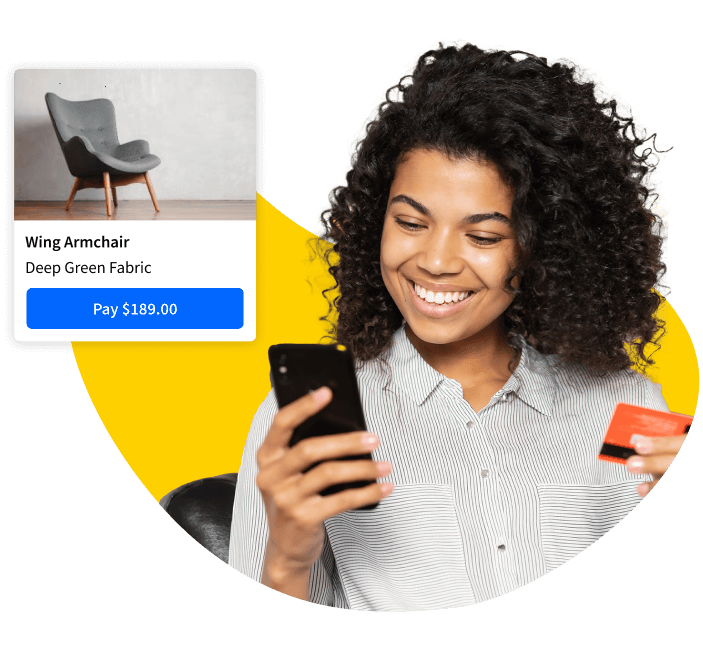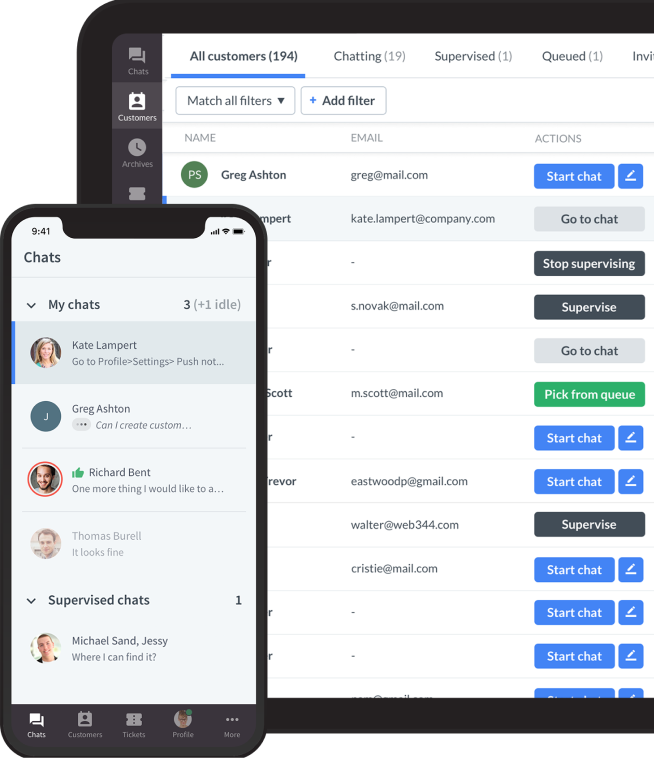Showing top 0 results 0 results found
Showing top 0 results 0 results found

Imagine you're in a meeting, and a vendor presents a software solution. It's good, meets your needs — but then they showcase a version that's not just good but stellar. It has features you didn't know you needed but now can't imagine living without. That's upselling.
But what if you want to upsell your product or services but are not sure how to do that? If you're just starting out, the idea of encouraging your prospects to spend more and more is a tad overwhelming.
Stick around as I delve deeper into the art of upselling, its pivotal role in today's business-to-business landscape, and how you can use it to increase average order value.
What is upselling?
Like in the example above, upselling is when a business nudges you to opt for a more advanced or feature-rich version of your original choice. It's not just about increasing the invoice amount — it's a strategy woven into the fabric of modern B2B interactions. Why? Because it not only amplifies revenue but also aims to provide a solution that better fits your business needs.
You might be thinking, "Is this just a tactic to squeeze more money out of me?" Well, not exactly. The overarching goal of upselling isn't just about increasing sales. It's about deepening the relationship between businesses and their customers.
By offering you a product or service that aligns more closely with your needs, businesses aren't just boosting their revenue — they're ensuring you get the best value and solution for your investment. It's a win-win: you get a product that fits like a glove, and they build a stronger, more profitable relationship with you.
The next time you're presented with an upsell, remember: it's about spending more, but it's also about finding the perfect match for your business needs and fostering a relationship that's built to last.
Upselling out in the wild
Let's take this concept out of the abstract and into the real world. Upselling is everywhere, and once you start spotting it, you'll see that it's more than a sales tactic — it's an art. Let's explore a few industries where upselling shines.
Ecommerce
Have you ever browsed for a basic laptop online and been presented with models with faster processors, more memory, or even a sleeker design? That's ecommerce sites working their upselling magic. They're trying to make an extra buck but also guiding you toward a product that might serve your needs better in the long run. Think of it as a friend saying, "Hey, if you're investing, why not get the best bang for your buck?"
Software and IT
Picture this: You're buying software for project management. The basic package looks good, but then you're shown a premium version with advanced analytics, integrations, and 24/7 support. That's the software world saying, "We got your back, no matter how complex your projects get." It's about ensuring you have the tools to succeed as your business grows and not just about selling pricier software.
Finance
Some of you have sat down with a financial advisor to discuss a standard savings account and walked away considering an investment portfolio. That's upselling in the finance world. They're looking to hold onto your money, but, at the same time, they're offering ways for your money to work harder for you. It's like they're whispering, "Why let your money nap when it could be running a marathon?"
In each of these scenarios, businesses aren't just pushing products — they're presenting solutions. They're looking at your needs and future and saying, "We got something that might fit you even better." And that's the beauty of upselling.
What's the difference between upselling and cross-selling?
You probably heard both these terms thrown around in business chats, and while they seem like two sides of the same coin, they're distinct in their approach. Let's break it down for you.
Upselling
This is when a business encourages you to go for the gold — opting for a more premium, feature-rich, or advanced version of what you initially wanted. It's like being at a car dealership, eyeing a standard model, and then being shown the same model but with leather seats, a sunroof, and an advanced sound system. The goal? To provide you with a product that offers more value, benefits, or luxury.
Cross-selling
On the other hand, cross-selling is when you're nudged to consider additional products or services that complement your primary purchase. Sticking with the car analogy, it's like the dealer suggesting you also pick up some all-weather floor mats or an extended warranty for your new ride. The aim is to enhance your main purchase, making your experience more comprehensive.
To put it in a B2B context:
- Upselling: You're buying a standard business software package, and the sales rep introduces a premium version with more features tailored for larger teams.
- Cross-selling: Along with the software, the rep suggests an integration tool or training sessions to help your team get the most out of the software.
While upselling focuses on upgrading, cross-selling is all about complementing. Both strategies aim to provide more value, ensuring you get the most out of your relationship with the business. Next time you're offered an upgrade or an add-on, you'll know exactly what's happening and can make informed choices that best suit your needs.
Implementing upselling in business
Now that you're well-acquainted with the concept of upselling, let's dive into the nitty-gritty of how to actually implement it in your business. Because knowing what upselling is and making it work effectively for you are two different ball games.
Know your product inside out
Before you can convince someone to go for the premium version, you 6 Stages of the Sales Process and Everything You Need To Know About Themneed to be crystal clear on what makes it premium. Understand the features, benefits, and the unique selling points.
Timing is everything
Don't rush into the upsell. Gauge where the customer is in the buying process. Sometimes, it's best to introduce the upsell after they've decided to make a purchase but before they've checked out.
Offer real value
This isn't just about making a bigger sale. It's about ensuring the customer genuinely benefits from the upsell. Ask yourself, "How does this add value to their original choice?"
Be transparent
Always be upfront about costs and benefits. The last thing you want is for a customer to feel like they've been tricked into spending more.
Train your team
Ensure that everyone, from sales to customer service, understands the upselling strategy and can communicate the benefits effectively.
Sephora is a great example of a company that upsells its products and uses live chat software to do that. Milena Wojewoda, Digital Project Specialist at Sephora, said:
"Since installing LiveChat on our website in March 2020, sales made thanks to online consultations constitute 1.7% of the company’s profits in the digital channel."
This proves that the product is crucial to upselling Sephora’s products. Additionally, after Sephora built a team dedicated to handling chats, the average order value increased by 5% compared to when agents were randomly assigned to chats.
A customer-centric approach is the heart of upselling
A deep understanding of customer needs is at the heart of every successful upselling strategy. After all, it's about what the customer needs to buy and not what you want to sell.
Imagine you're a consultant. Your client comes to you with a specific problem. Sure, you could offer them the standard package, but with a deeper understanding of their unique challenges and goals, you might realize they'd benefit more from a tailored solution — even if it's pricier. That's upselling with a customer-centric approach.
Always put yourself in the customer's shoes. What are their pain points? What are their aspirations? By aligning your upselling strategy with their needs and desires, you're boosting your revenue, building trust, and fostering long-term relationships.
As you venture into the world of upselling, remember that it's a strategy rooted in understanding, value, and genuine customer care.
Analytics and data-driven upselling
If you thought upselling was all about intuition and salesmanship, think again. In today's digital age, data and analytics play a starring role in shaping those upselling strategies. Let's dive into how numbers, feedback, and trends can be your secret weapon in the upselling game.
The power of data in upselling
Data is a goldmine of insights waiting to be unearthed. By analyzing purchase histories, customer behaviors, and browsing patterns, you can identify which products or services your customers are most likely to consider as an upsell. It's like having a crystal ball that tells you, "Hey, this customer bought A; they might be interested in A+."
Using customer data to tailor your approach
Remember that time you felt a brand just "got you?" Chances are, they were using customer data to tailor their approach. By understanding individual preferences, past interactions, and even challenges faced by a customer, you can personalize your upselling pitch and suggest products that fit their needs like a glove instead of simply pushing the most expensive product.
Knowing what's hot (and what's not) on the market
Staying updated with market trends is crucial. By analyzing what's popular in the market or understanding emerging needs, you can position your upselling strategy to be more relevant and timely. If everyone's raving about a particular feature or service, why not highlight it in your upselling pitch?
Feedback — the gift that keeps on giving
Never underestimate the power of feedback. Whether it's positive praise or constructive criticism, customer feedback can offer invaluable insights. Maybe a feature you're upselling isn't as user-friendly as you thought, or perhaps there's a demand for something you hadn't considered. By listening to your customers, you can refine your upselling tactics to be more effective and resonant.
While the art of conversation and understanding customer needs is at the heart of upselling, data and analytics are the compass guiding the way. By leveraging data-driven insights, you're making informed decisions, ensuring your upselling strategies hit the mark every time.
A pivotal player in the grand game of business growth
But here's the thing: while upselling can undoubtedly boost your revenue, its real magic lies in its ability to foster stronger, more meaningful relationships with your customers. It's about offering them a product and providing solutions, value, and, above all, understanding.
So, as you head back to your business battleground, remember this: Upselling is more than just an arrow in your quiver. It's a tool, a strategy, a philosophy. Embrace it, refine it, and always, always keep your customer's needs at the heart of it. Because when you do, not only will your business thrive, but you'll also create lasting connections that go beyond the transaction.








Comments